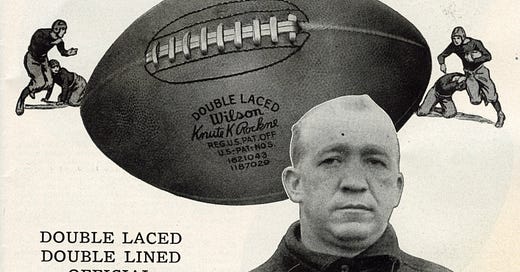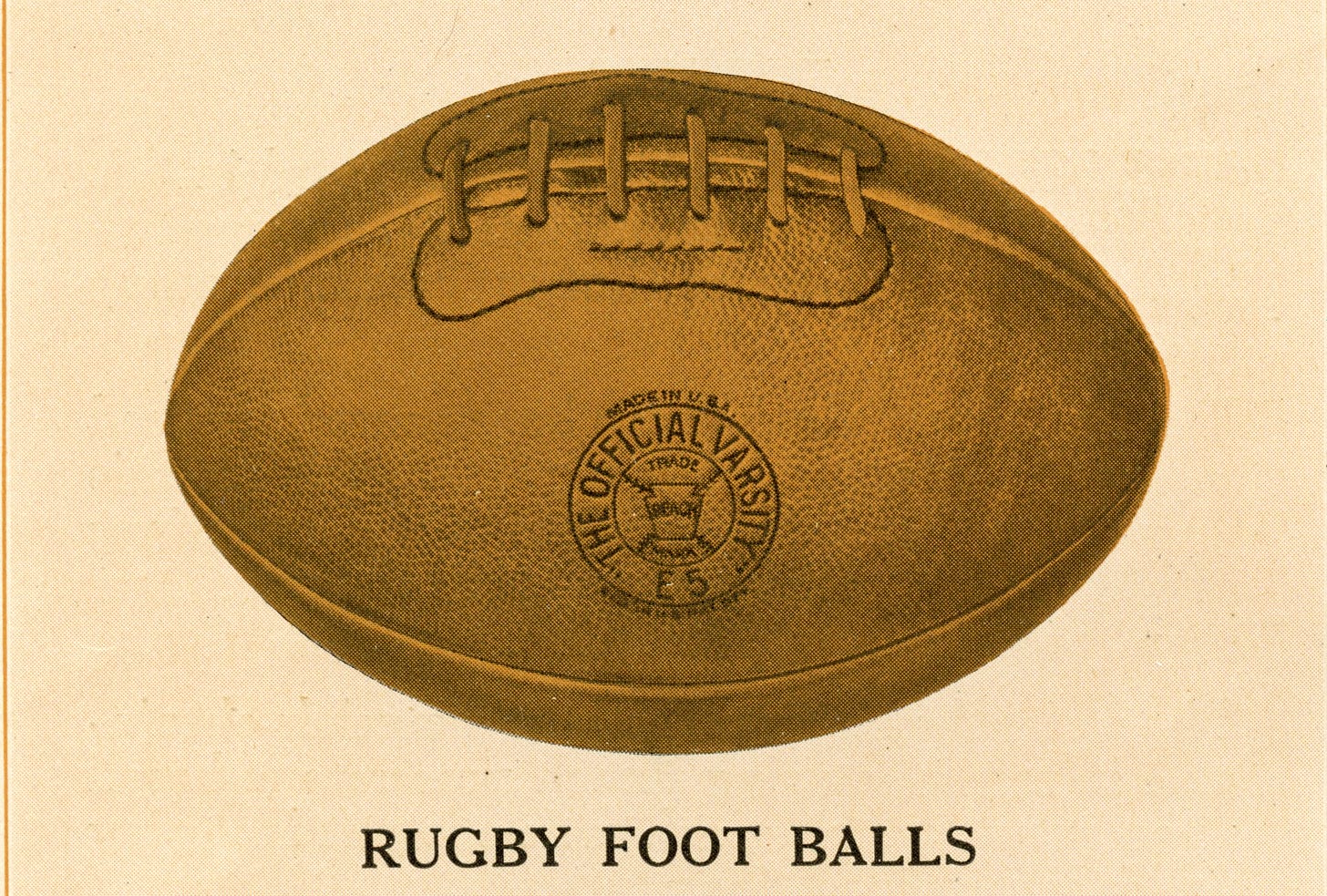Football Under Pressure
Chapter 1 mentioned the late 1920s and early 1930s bootleg footballs, focusing on slimmer balls that gained popularity among passing-oriented teams. Another form of bootleg balls dealt with their inflation levels, which might be called Inflategate today. Instead of balls structurally different from the norm, coaches who did not have strong punters or kickers sometimes inflated the game balls to very high levels to make them challenging to punt or kick for distance. Technically, the balls were not overinflated since football did not have an inflation standard. They were just inflated to higher levels than the norm, whatever that was. And just as Heisman had commented in 1912 that the ball could have been as big as a barrel before the rules specified the ball's size, the lack of an inflation standard meant balls could be as soft as a pillow, hard as a rock, or just right.
To deal with the inflation issue, the NCAA's rule makers of 1929 added football's first inflation requirements, requiring the ball to be:
... inflated with a pressure of not less than 13 pounds nor more than 15 pounds and shall have the shape of a prolate spheroid - the entire surface to be convex.
The new rule required game officials to check inflation pre-game, forcing the use of valved balls in games since the gauges that measured inflation levels worked only with valved balls.
Lacing Them Up
By the time valved balls came along, the forward pass had been legal for over 15 years, and the overhand spiral had become the primary means of throwing the ball. The presence of laces assisted in throwing the overhand spiral, so the football’s laces served a function beyond temporarily sealing the ball. Not so with basketballs, soccer balls, volleyballs, and rugby balls, so the manufacturers immediately began eliminating the laces from those balls. Like Rockne, Wisconsin's basketball coach, Walter Meanwell, teamed with Spalding in 1925 to "invent" a valved basketball without external lacing, called the hidden lace basketball. For a time, the manufacturers continued selling laced balls for sports other than football due to customer preferences and the lower costs of those balls. Still, external laces largely disappeared from the balls used in other sports by the late 1930s.
Football laces followed a different path. Thin, flexible rawhide had been the preferred lace since cobblers first encased pig bladders, but with the ball no longer needing to be unlaced and relaced to be reinflated, the functional requirements of the laces changed. Pre-valve footballs typically had six leather cross laces barely rising above the ball's surface, but valved balls allowed manufacturers to optimize the lacing for passers rather than equipment managers. The change in requirements led to changes in the number of stitches, their pattern, and the composition of the laces.
Keep reading with a 7-day free trial
Subscribe to Football Archaeology to keep reading this post and get 7 days of free access to the full post archives.




